Reading Time: 9 minutes
The right Bass fishing rig can flip an ordinary fishing trip into an extraordinary day on the water. It’s all about the match-up – making sure you have the right rig for the right spot, under the right conditions.
Ever tried easing a jig through thick weeds, or sending a worm into the deep where the big ones lurk? Each scenario screams for a specific setup. From the stealthy slide of a Texas rig to the deep dive of a drop shot rig, there’s a whole world out there to explore. And that’s where we come in…
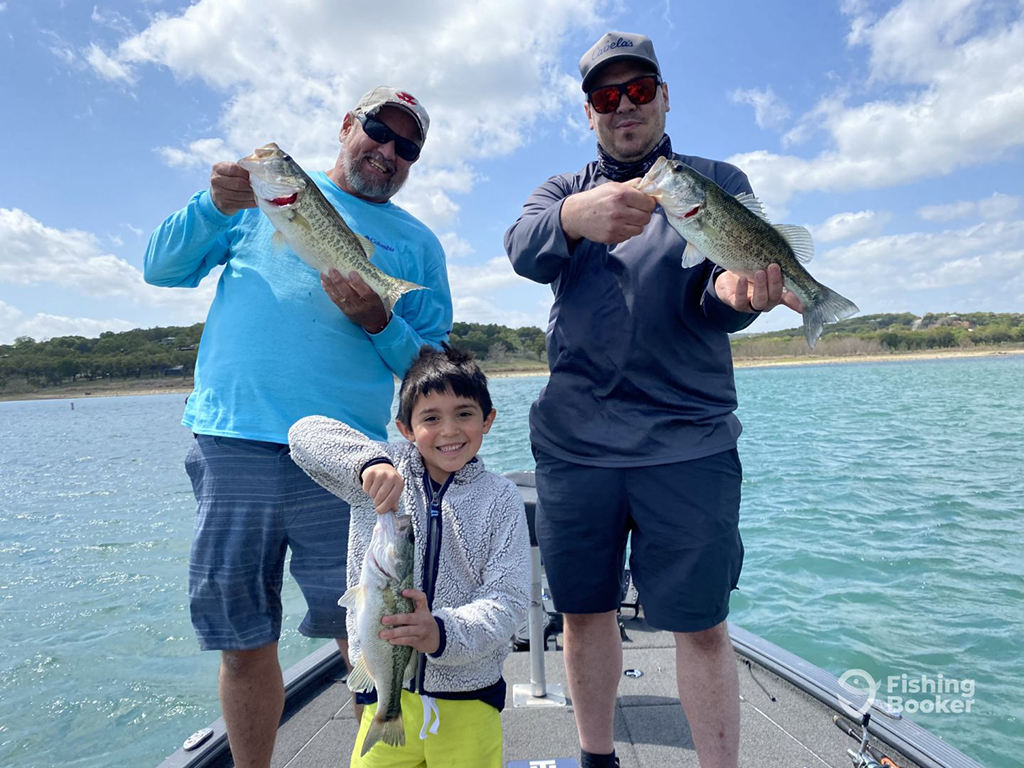
Photo courtesy of Redemptional Fishing And Outdoors
This guide is your ticket to mastering those essential rigs. We’re not just talking about tying a hook to a line. We’re diving into the hows and whys of rigs that work wonders. Whether you’re a newcomer still looking to land your first big Bass or a seasoned angler aiming to refine your technique, you’re in the right place. Let’s unwrap the secrets of Bass fishing rigs together, transforming hopeful throws into guaranteed catches.
The Texas Rig: Stealth and Precision in Thick Cover
The Texas rig excels in environments laden with obstacles—thick weeds, underwater timber, or rocky bottoms. It’s the go-to choice for stealthy presentations to many different Bass species hiding in heavy cover, ideal for clear to moderately murky waters.
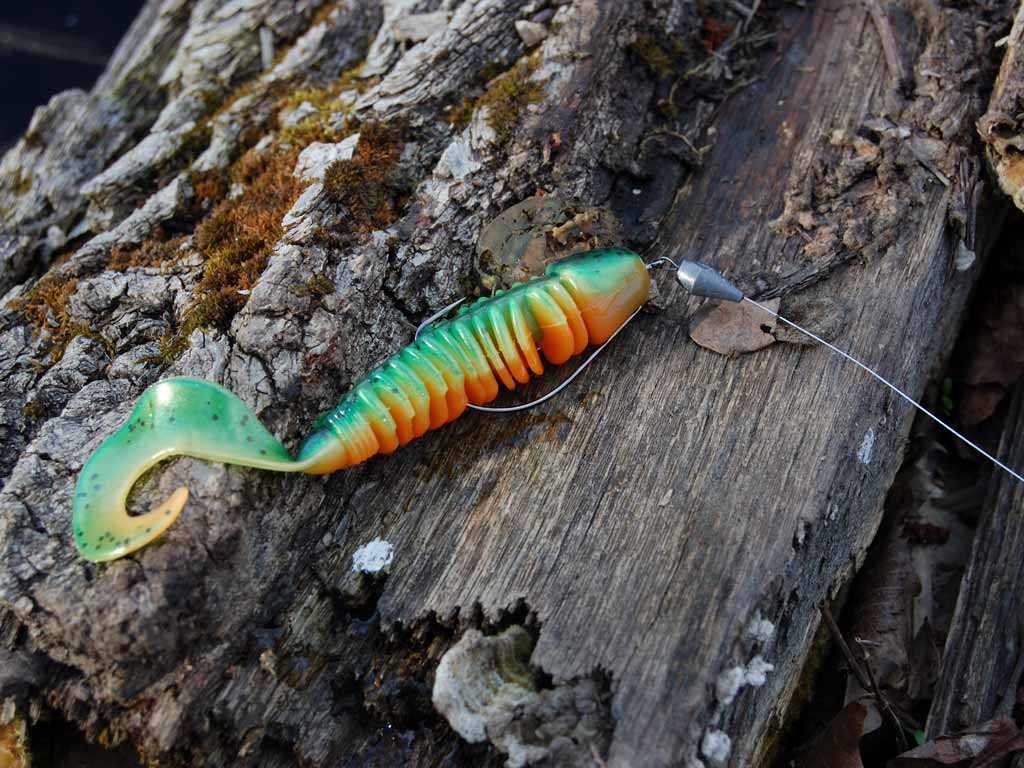
A slow, steady retrieve works best, punctuated by occasional pauses and subtle twitches to make the bait appear as a live creature navigating through the obstacles. This method can provoke strikes from Bass observing the bait from their cover.
Its weedless setup minimizes snags, allowing anglers to cast into dense cover with confidence. The rig’s simplicity and effectiveness in getting the bait right into the Bass’s lair without alarming them are unparalleled.
Rigging a Texas rig is straightforward but requires attention to detail for optimal performance. Thread your soft plastic bait onto a hook, ensuring it sits flush against the hook’s eye for a sleek, weedless profile. The weight—typically a bullet sinker—is added above the hook and can be pegged in place if necessary. Adjusting the weight allows for versatility in depth control and casting distance.
The Carolina rig is designed for deeper water exploration, making it especially effective in flats and near submerged structure edges. It’s suited for the post-spawn and summer months when Bass move to offshore structures.
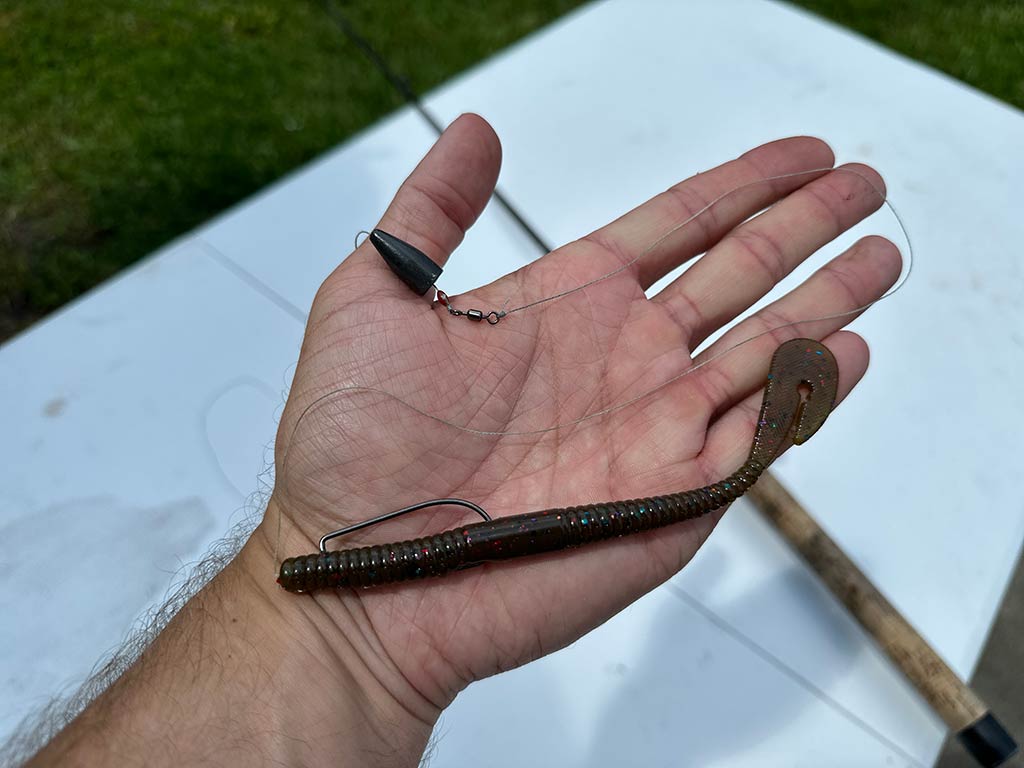
A slow, dragging retrieve keeps the bait in constant contact with the bottom, mimicking the movement of prey. Occasional pauses and rod twitches can add lifelike action to the trailing bait.
This setup involves a heavier weight on the main line, followed by a bead to protect the knot and a swivel to prevent line twists. A leader (length can vary based on the depth of the fish) is then tied to the other end of the swivel, with the hook and bait at the terminal end. Experimenting with leader lengths and weights can fine-tune the rig’s performance depending on the specific conditions.
This rig allows for long casts and thorough coverage of large areas. The separation between the weight and the bait enhances the natural movement of the latter, making it more appealing to Bass.
The Drop Shot Rig: Precision Targeting in Vertical Spaces
Perfect for targeting suspended Bass or fish holding close to the bottom in deeper water, the drop shot rig shines in clear water scenarios where finesse is required to tempt wary Bass.
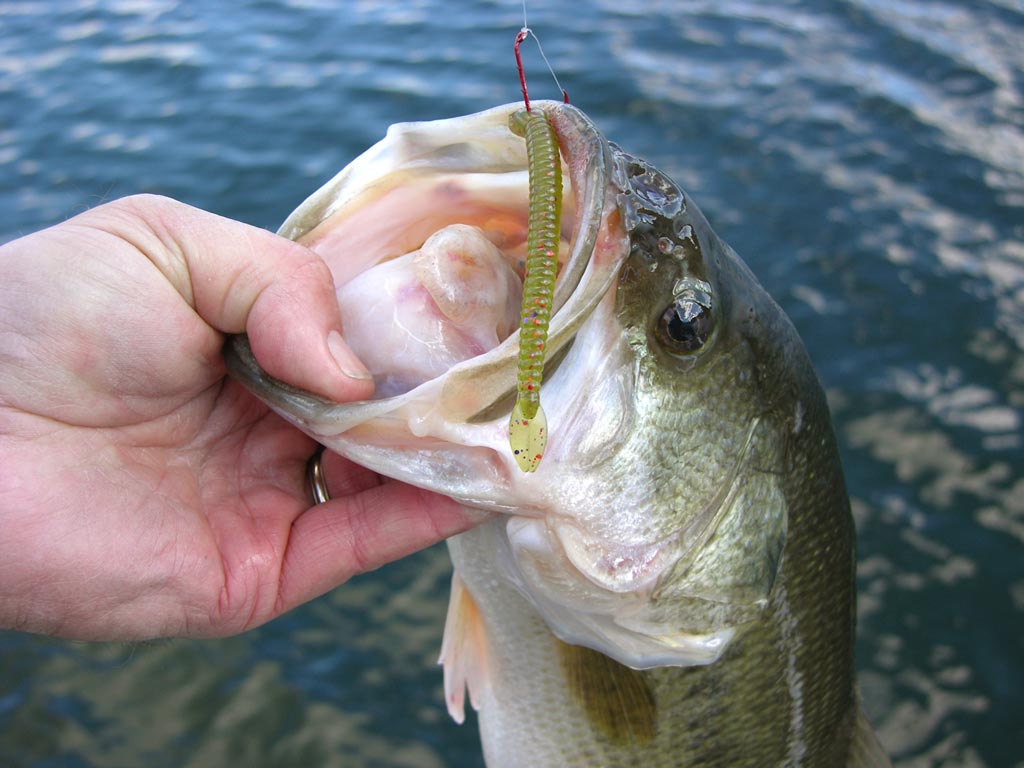
When reeling in a drop shot rig, minimal movement is key. Gentle twitches of the rod with plenty of pauses allow the bait to flutter and dance enticingly in place, appealing to the Bass’s predatory instincts.
The primary benefits of this type of rig include precise control over the bait’s depth, presenting it effectively in the Bass’s strike zone. The rig’s vertical presentation is ideal for fishing specific structures or depth contours where Bass congregate.
Tying a drop shot rig involves attaching the hook with a Palomar knot roughly 12–18 inches above the end of the line The hook points away from the line, allowing the bait to stand out horizontally. Adjusting the distance between the weight and the hook can target Bass at specific depths, a crucial factor in its effectiveness.
The Jig Head Rig: Versatile and Effective
The next rig on this list is universally versatile, suitable for both casting and vertical presentations in a variety of environments.
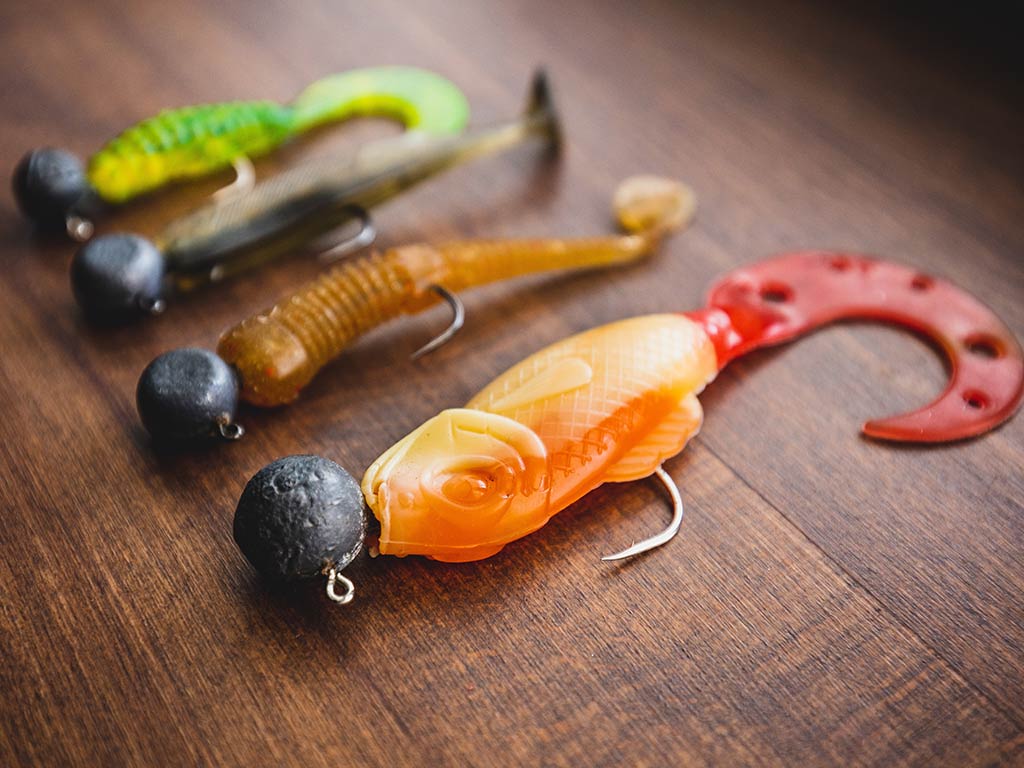
The retrieval can vary widely, from steady retrieves to bouncing along the bottom, to swimming through vegetation. The jig’s weight dictates its sink rate and can be matched to the desired fishing depth or speed of retrieval.
Its simplicity and adaptability make the jig head rig a staple for Bass anglers. The weight of the jig head aids in casting distance and accuracy, while the variety of jig designs and colors allows for targeting Bass under a wide range of conditions.
Selecting the right jig head weight and hook size for your bait is crucial. Thread the bait onto the jig hook, ensuring it’s straight for a natural presentation. Some anglers add a small piece of soft plastic or live bait to the hook for added attraction. Experimenting with retrieval speed and jigging action can help mimic local prey, increasing the chances of a bite.
Fine-Tuning Your Rig for Conditions and Seasons
Mastering Bass fishing rigs isn’t just about knowing how to tie them. It’s about understanding how to adjust and fine-tune these setups. After all, you want to match the constantly changing conditions of the water and the seasonal behavior of Bass.
Each rig can be modified in subtle ways to increase its effectiveness, whether you’re facing a sudden cold front, fishing in crystal-clear water, or targeting Bass during their spawning season. Here’s how to adapt your rigs to stay one step ahead of the game…
Adjusting for Water Clarity and Temperature
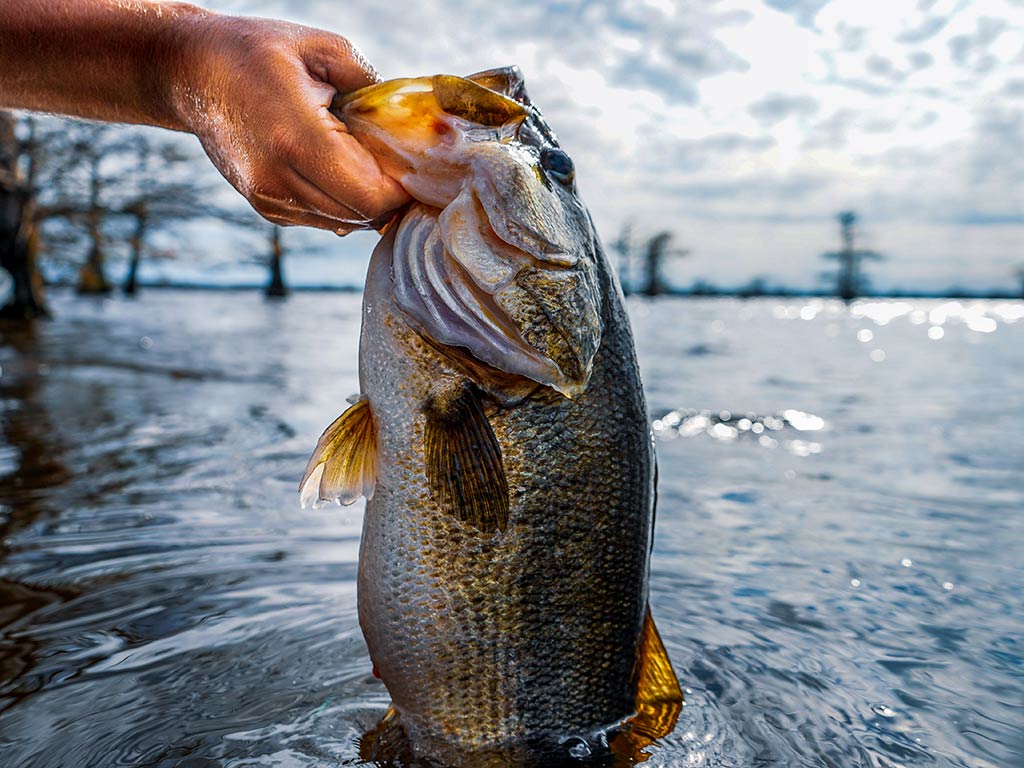
Water conditions play a significant role in how Bass perceive and approach potential meals. In murky waters, Bass rely more on their lateral line and sense of smell. Therefore, rigs with more movement and scent dispersion, like a Carolina or Texas rig with stink bait, are more effective.
Conversely, in clear water, visual attractors and subtle presentations become crucial. For example, a drop shot rig with a natural-colored finesse worm can be perfect for enticing Bass with a more cautious approach.
When water temperatures drop, Bass’s metabolism slows and they become less active. This is when slow-moving, bottom-dwelling presentations shine. A weighted Texas rig or a jig head rig dragged slowly along the bottom can provoke strikes from lethargic Bass. During warmer months, when Bass are more aggressive, faster-moving presentations and topwater rigs can trigger more reactive bites.
Seasonal Adjustments
The seasons dictate Bass behavior and location. In spring, as Bass move shallow for spawning, rigs that can navigate the nooks and crannies of their nesting areas are key. A Texas rig, with its weedless presentation, allows you to get in and out of potential spawning sites without snagging.
Post-spawn, as Bass move to recover, a Carolina rig worked along drop-offs and ledges offers a tempting meal for recovering fish.
Summer sees Bass seeking deeper, cooler waters or shade under cover. This is the time for deep-diving Carolina rigs or vertical presentations like the drop shot, especially during the hottest parts of the day.
Finally, in fall, Bass aggressively feed to prepare for winter. Moving baits paired with a jig head rig mimicking the fast-moving forage fish that Bass target are your go-to.
Rig Modifications
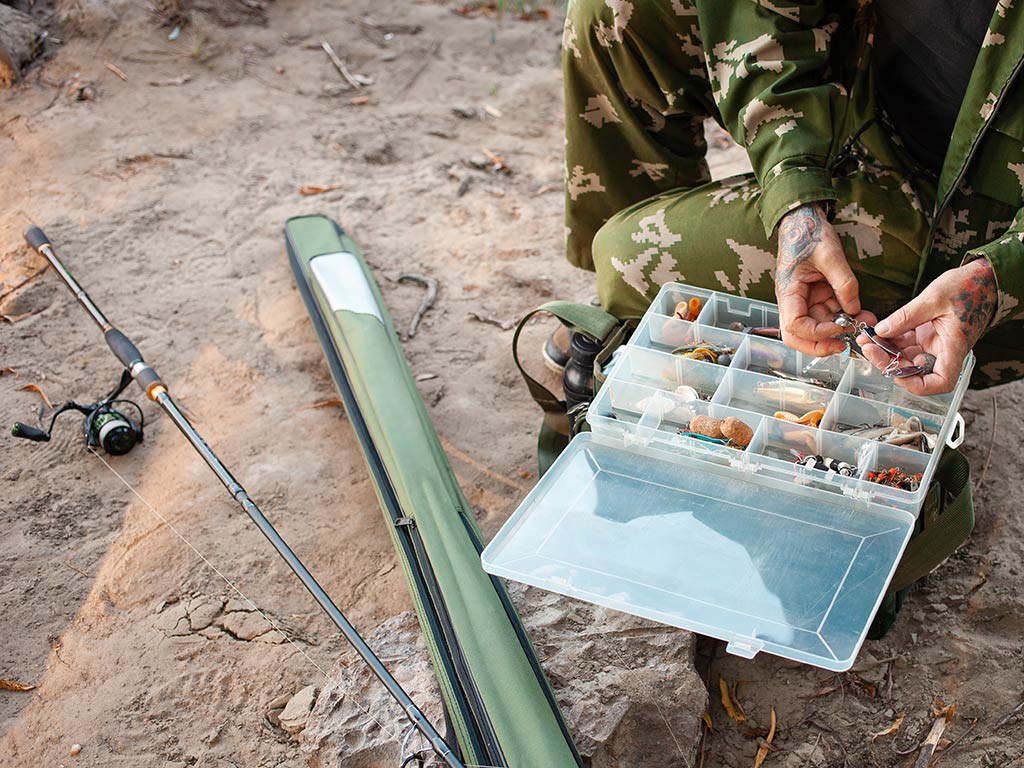
Tweaking your rig to match the day’s fishing conditions can significantly impact your success rate. Such adjustments might be straightforward, like modifying the weight to enhance how far and deep your cast goes. Or, it might involve more subtle changes, such as selecting a hook size that perfectly mimics the local bait fish.
The most adept anglers treat their rigs as versatile instruments, not fixed tools. They’re always keyed into the environment, noting shifts in water clarity, temperature swings, and the seasonal movements of Bass. This flexibility allows them to maintain a steady catch rate, overcoming whatever curveballs the elements may present.
Advanced Rigging Techniques and Modifications
Elevating your Bass fishing game means stepping beyond standard setups and venturing into the realm of advanced rigging techniques. These tweaks and changes, tailored for specific scenarios, can significantly enhance the appeal of your presentation and make your bait irresistible to Bass…
Tweaking the Texas Rig: The Punch Rig Variant

One effective modification for fishing in extremely thick vegetation, such as lily pads or heavy mats, is transforming your standard Texas rig into a punch rig. This involves adding a heavier weight, typically 1 ounce or more. This will allow the rig to “punch” through dense cover and reach the Bass lurking below.
The key is to pair this setup with a creature bait or a bulky plastic worm to ensure the rig falls straight down. The sudden intrusion into their hidden domain often triggers an aggressive response from Bass.
Enhancing the Carolina Rig: The Floating Setup
To make a Carolina rig even more enticing in deep water, consider adding a floating element to your bait or employing a buoyant soft plastic. This modification causes your lure to hover just above the bottom, presenting a more lifelike bait fish or crawfish imitation. This is particularly effective in clear water where Bass rely heavily on sight. Adjusting the leader length allows control over bait placement, ideal for suspended Bass or those holding close to specific structures.
Drop Shot Rig: Adjusting for Aggressive Bass
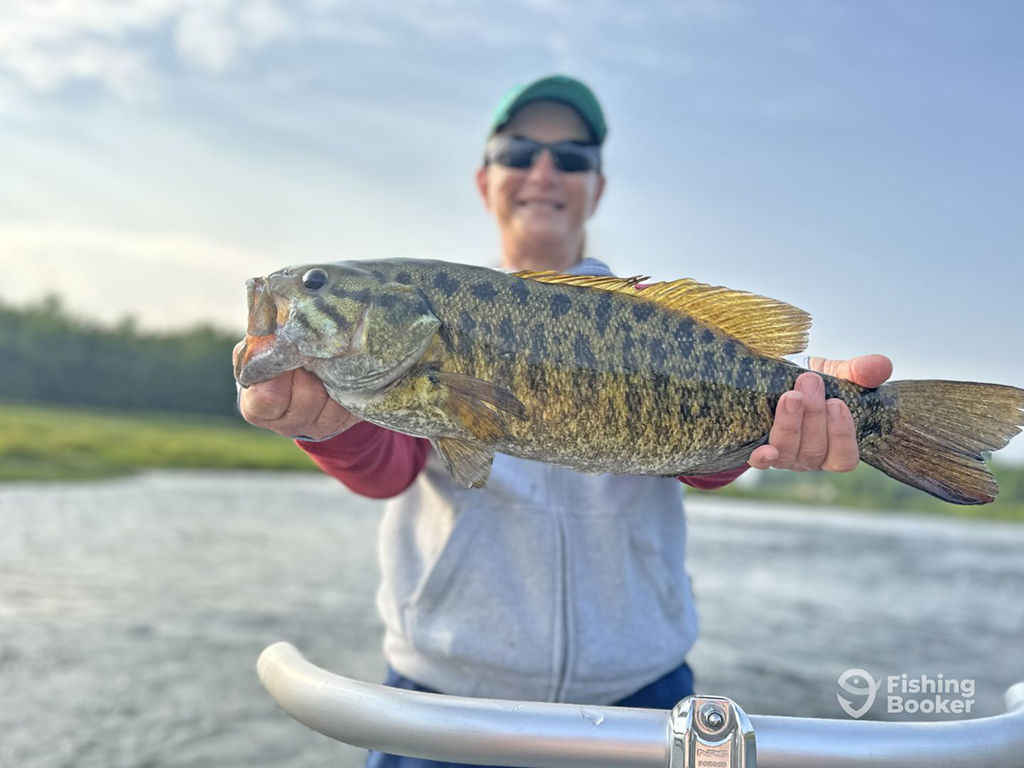
Photo courtesy of
Big Ridge River Guides
While the drop shot rig is renowned for its finesse presentation, it can be modified for more aggressive Bass by shortening the leader length between the weight and hook. This positions your bait closer to the bottom, ideal for mimicking a bait fish feeding on the bottom or a crayfish in a defensive posture. Additionally, incorporating slight twitches with longer pauses can mimic dying bait fish. This will provoke strikes from Bass looking for an easy meal.
Jig Head Rig: Skirted Jigs and Swimbaits
The jig head rig, while already versatile, can be adapted further by switching between skirted jigs and swimbaits. Skirted jigs excel in mimicking a variety of Bass prey—depending on how you work them. For a more natural imitation, attaching a paddle tail swimbait to a jig head and retrieving it with a steady reel can create the illusion of a swimming forage fish, perfect for clear water conditions.
Common Mistakes to Avoid in Bass Rigging
Even with a deep understanding of Bass fishing rigs and techniques, certain missteps can undermine your fishing efforts. Let’s address some of the frequent mistakes anglers make when rigging for Bass and how to correct them:
Incorrect Hook Size and Type
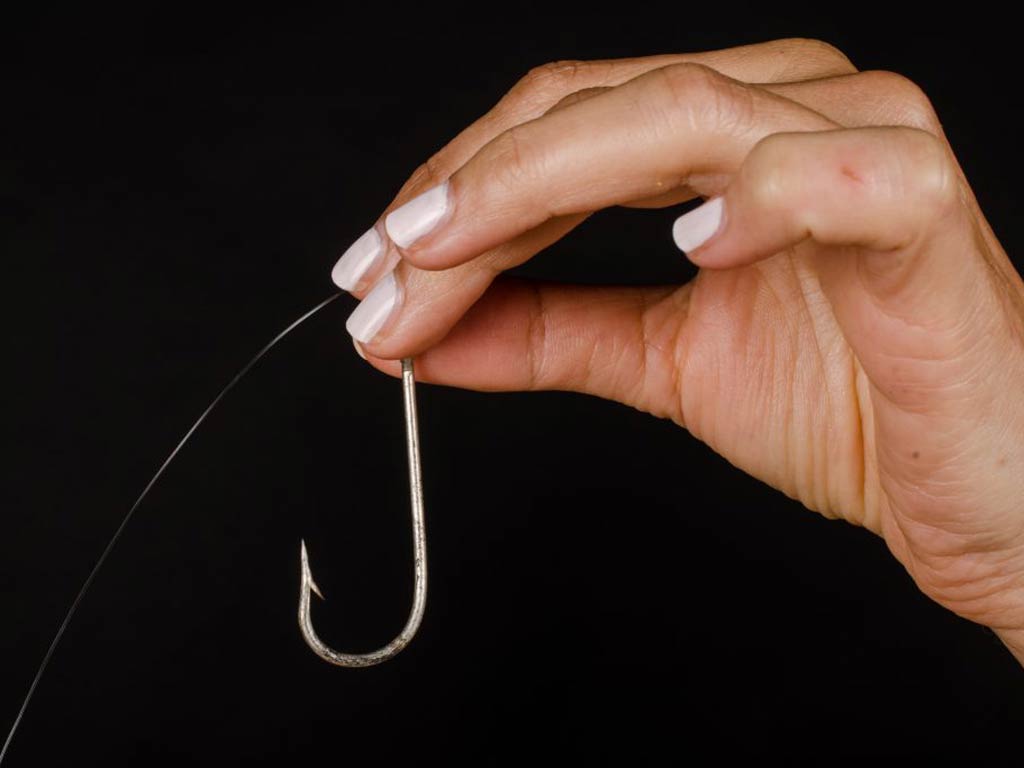
One of the most prevalent errors is using a hook that’s either too large or too small for the bait. This affects the natural movement and presentation of the bait. The wrong hook type can also lead to missed hooksets or lost fish. To avoid this, match the hook size to your bait’s profile and use a hook suited to your rigging method. For example, use wide-gap hooks for Texas rigs and drop shot hooks for vertical presentations.
Overlooking Line and Knot Strength
Not paying attention to the strength of your line or the reliability of your knots can end with snapped lines. The fix? Opt for a line that’s tough enough to withstand wear and tear, tailored to where you’re fishing. It’s also crucial to master your knots, making sure they’re secure and ready to hold up against the fish. Take the Palomar knot, for instance—it’s sturdy, straightforward to tie, and an excellent fit for a variety of fishing setups.
Misjudging Weight and Sinker Placement
Using a weight that’s too heavy can make your bait appear unnatural. Meanwhile, one that’s too light may not reach the desired depth. Incorrect placement of the sinker on the line can also affect the action of the bait. You can solve this by starting with the lightest weight you can use while still maintaining good contact with the bottom or keeping your bait in the strike zone. Experiment with different weights until you find the right balance for your specific fishing conditions.
Bass Fishing Rigs: Your Key to Success
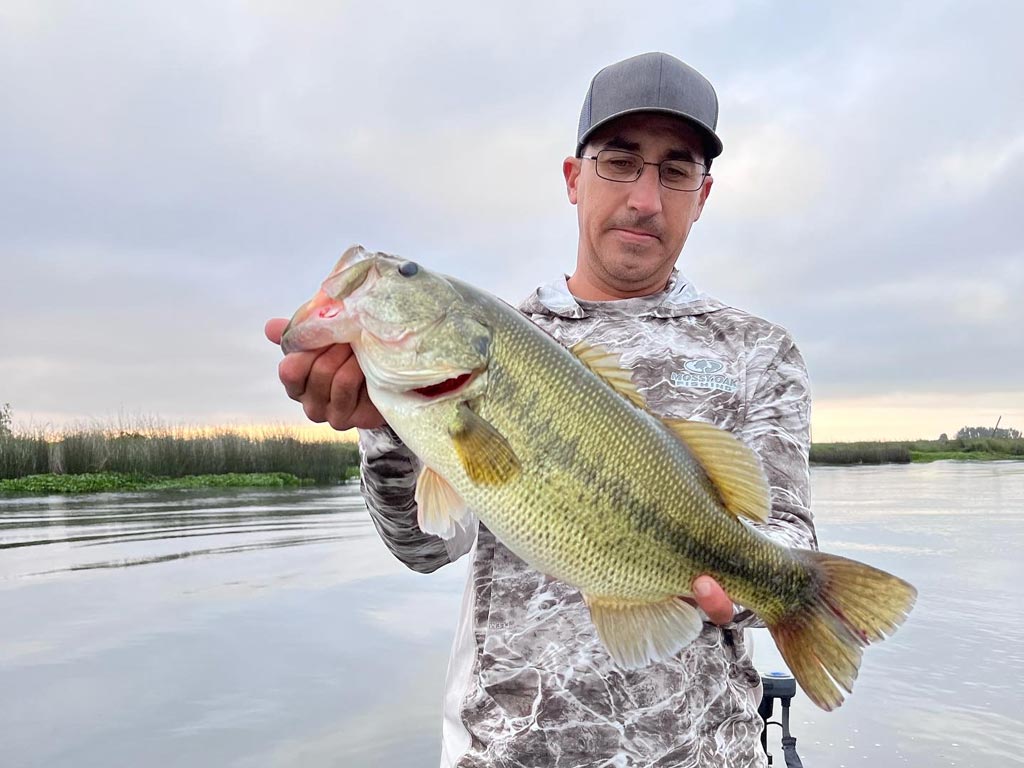
Photo courtesy of Delta BASSN’ Guide Service
We’ve journeyed through the essentials—from the stealth-required Texas Rig that sneaks into the Bass’s lair to the precision-demanding drop shot rig that dangles your bait enticingly in the strike zone… It’s clear now that mastering these rigs isn’t just about tying knots. It’s about crafting a strategy that speaks directly to the Bass, coaxing them into biting, even on their most stubborn days.
Armed with the knowledge of when to deploy each rig and how to tweak them to perfection, you’re now ready to engage in a chess match with nature. So, gather your gear, choose your rig with purpose, and step into the water ready to outsmart the elusive Bass. The thrill of the catch is just a well-chosen rig away!
What’s your favorite Bass fishing rig? Maybe you’re looking for more tips? Reach out in the comments below and we’ll answer all your questions!
The post The Best Bass Fishing Rigs: An Angler’s Guide for 2024 appeared first on FishingBooker Blog.
https://fishingbooker.com/blog/bass-fishing-rigs/
 CampingSurvivalistHuntingFishingExploringHikingPrivacy PolicyTerms And Conditions
CampingSurvivalistHuntingFishingExploringHikingPrivacy PolicyTerms And Conditions
